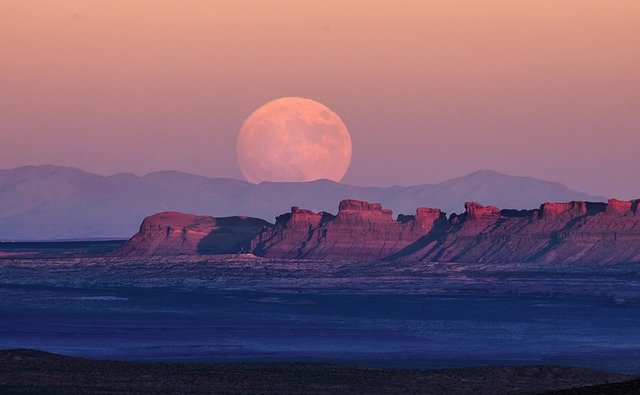Why is the Moon so big tonight
Tonight, it’s worth looking at the sky: it’s a full moon, or rather a super moon. It looks brighter and bigger than usual, but is it really? And why is it called “Pink Moon“?
Stuttgart – Anyone looking up to the sky last night should not have missed out on the big, bright moon. The sphere was clearly visible even in daylight. He hadn’t even reached his normal height – because he wouldn’t until the next night.
Tonight is not just a full moon
With a full moon, the Moon is called opposition: this means that the Moon, Earth, and Sun are on the same line. To the observer, the full moon appears to be the brightest star in space after the Sun.

Most people should know that the Moon itself does not shine, but only reflects the light of the Sun. But also that it is only seven percent of the sunlight?
“The surface of the Moon is actually same as dark as the lava landscape. (…) Only the universe is certainly darker. If you put a ball in it that reflects “only” seven percent of the sunlight, then It appears very bright,” said Dr. Uwe Lemar explains.
In contrast, the Earth reaches 37% and is actually much brighter than the Moon. “If an astronaut flies to Earth from deep space, he will first recognize Earth, which reflects much more light than the Moon.”
The Moon and Its Journey in September
It’s always the same, but every night it’s a little different: our moon.
It moves through the constellations in the sky – sometimes like a sickle, sometimes like a full moon. The current lunar calendar for September with the phases of the moon and the most beautiful encounters.
In September, the waning crescent can only be seen late at night or early morning as it passes through the winter constellations. It rises more and more until it disappears completely around the new moon of September 7.
Then the young crescent visits bright Venus in the west, spins more and more through the summer constellations and the Milky Way, and then meets the two bright planets Saturn and Jupiter.
The full moon has its equinox on the night of September 21, after which it rises more and more late in the evening. At the end of the month, it again shrank significantly when it reached the winter constellations again.
Dates to remember for a Big Moon
In September, the waning crescent can only be seen late at night or early morning when it moves into the winter constellations.
It rises more and more until it disappears completely around the new moon of September 7.
Then the young crescent visits bright Venus in the west, spins more and more through the summer constellations and the Milky Way, and then meets the two bright planets Saturn and Jupiter.
The full moon has its equinox on the night of September 21, after which it rises more and more late in the evening. By the end of the month, it has shrunk significantly when it reaches the winter constellations again.
On the morning of September 3, the crescent forms a line with the two brightest twin stars Kastor and Pollux, lasting about five o’clock.
Hours are visible. The Moon then moves into Cancer and then into Leo, which it will reach on September 5. But by the time the lion rises high enough above the horizon, the sky is too bright for stars.
On the morning of September 6, the crescent can be seen for the last time: it only rises for an hour and a half. Five, just one hour before sunrise.
With only one percent of the lunar disk still illuminated by sunlight, the sickle is very thin. After that, the Moon is completely hidden in the bright sun: on September 7, our companion passes between Earth and the Sun like a new moon.